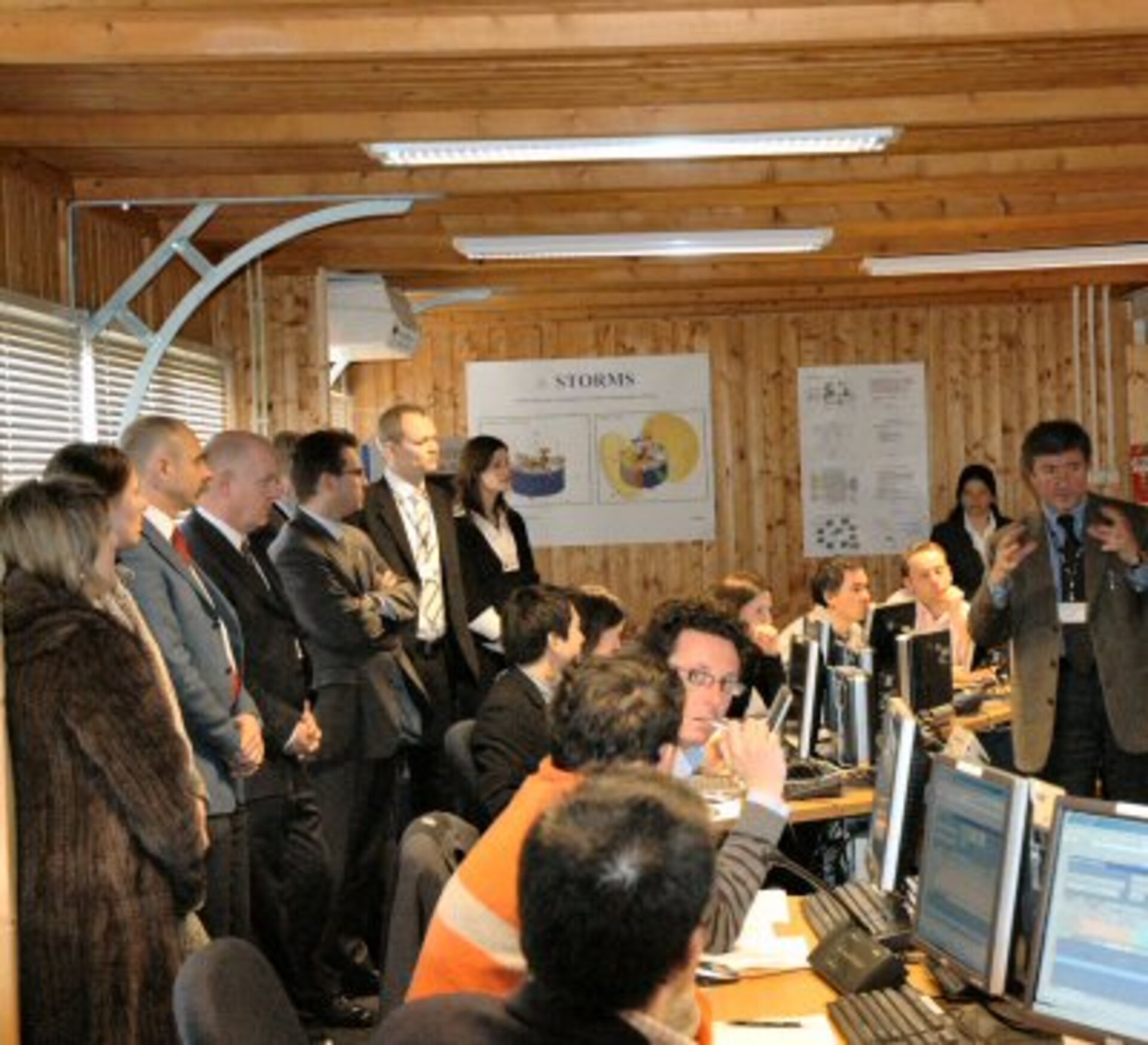Industrial Policy Committee Members Visit the ESA Concurrent Design Facility
As part of their busy schedule, the participants to the 235th IPC meeting at ESTEC, took the opportunity to visit some of the facilities and laboratories including the Concurrent Design Facility (CDF).
The ESA Industrial Policy Committee (IPC), which comprises representatives of the 17 ESA member states, held their 235th meeting on 20-21 March 2007. Some of the delegates were fortunate to visit the CDF during a session of the NEO3 (Near Earth Object) study and were able to see the multi-disciplinary CDF team in a design study including interaction over the video conferencing facility with ESOC.
The IPC members were initially introduced to the CDF and its role as a state of the art design facility via a short presentation on the advantages of concurrent engineering (CE) and how it has been applied at ESTEC. Among the advantages of CE are a shortening of a pre-phase A design studies with a corresponding reduction in cost, as well as the improvement in study quality. This is due to the truly interactive and iterative nature of CE, and the simultaneous participation of all technical disciplines involved in the life-cycle of a space project, including risk, programmatics, operations and cost. The CDF success has induced the creation of several similar centres in Europe and there is an increasing interest in the space community for this innovative approach. The CDF has now become an essential tool for the ESA decision making and risk management process, where the results of the CDF studies and assessments on future potential projects are used within the IPC to determine strategic decision making and to select future ESA missions.

As well as finding out about the CDF, the delegates were interested in how concurrent engineering, based on the ESA CDF model, is being used by both industry and academia to improve their design processes. It was explained how CE is being used to assist in the development of new space systems and architecture (e.g. system of systems, system on chip, formation flying) and the potential for using CE in later phases of the project life cycle.


